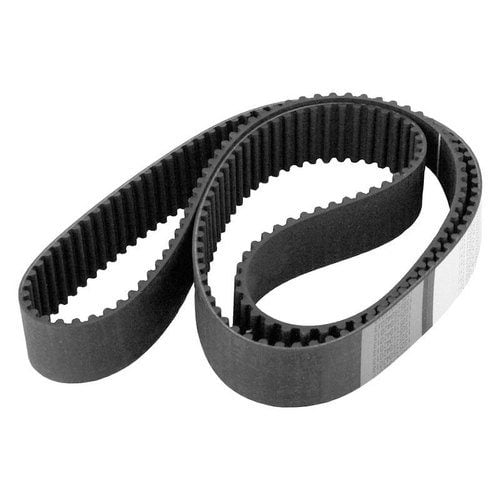
Rubber Timing Belts
| Price per Unit | Piece |
| Brand | Contitech, Germany( |
| Material | Rubber |
| Type | FRP V Belts |
| Size | XL, L, H, XH |
| Usage/Application | Power Transmission |
| Color | Black |
Backed by rich industry experience, we are offering an extensive range of Rubber Timing Belts. Offered timing belt is appreciated in the market for its performance & best usage. Our timing belt is designed by using advance techniques & top notch material in fulfillment with set standard. We are offering this timing belt to our customers in a stipulated time frame with numerous specifications.
Features:
- Silicone-free
- Temperature resistance
- Enhanced durability
Rubber Timing Belts
| Price per Unit | Piece |
| Brand | Contitech, Germany( |
| Material | Rubber |
| Type | FRP V Belts |
| Size | XL, L, H, XH |
| Usage/Application | Power Transmission |
| Color | Black |
Backed by rich industry experience, we are offering an extensive range of Rubber Timing Belts. Offered timing belt is appreciated in the market for its performance & best usage. Our timing belt is designed by using advance techniques & top notch material in fulfillment with set standard. We are offering this timing belt to our customers in a stipulated time frame with numerous specifications.
Features:
- Silicone-free
- Temperature resistance
- Enhanced durability
Rubber timing belts are crucial components in various mechanical systems, renowned for their precise power transmission capabilities and durability. Constructed from high-quality rubber compounds reinforced with fibers or cords, these belts exhibit excellent resistance to wear, abrasion, and fatigue, making them ideal for demanding applications. Their construction typically includes toothed profiles on the inner surface, which engage with corresponding pulley teeth to ensure accurate timing and synchronization in machinery.
Industries ranging from automotive and aerospace to manufacturing and robotics rely on rubber timing belts for the efficient operation of their machinery. In the automotive sector, timing belts play a vital role in synchronizing the rotation of the engine’s crankshaft and camshaft, ensuring precise valve timing and optimal engine performance. Similarly, in aerospace applications, these belts are used in aircraft engines to drive critical components such as fuel pumps and accessory gears with precision and reliability. Moreover, in manufacturing and robotics, timing belts are employed for tasks such as conveyor systems, robotic arms, and CNC machinery, where accurate motion control is essential for precision manufacturing processes.
The advantages of rubber timing belts are numerous. Their toothed design provides positive engagement with pulleys, preventing slippage and ensuring precise timing and motion control. Additionally, their flexible and resilient nature allows for smooth operation and minimal vibration, reducing noise and extending the lifespan of machinery components. Furthermore, rubber timing belts require minimal maintenance and lubrication, resulting in lower operating costs and downtime compared to chain or gear-driven systems.
Key parameters for the design of rubber timing belts include pitch, width, tooth profile, and material composition. Pitch refers to the distance between tooth centers and determines the belt’s engagement with pulleys, while width is tailored to fit specific pulley dimensions and torque requirements. Tooth profile options include trapezoidal, curvilinear, and modified curvilinear designs, each optimized for different load and speed conditions. Material composition considerations include factors such as temperature resistance, chemical compatibility, and static conductivity, ensuring optimal performance in diverse operating environments.
In conclusion, rubber timing belts are indispensable components in a wide range of mechanical systems, providing precise and reliable power transmission for critical machinery operations. Their robust construction, efficient performance, and versatility make them a preferred choice for industries requiring accurate motion control and synchronization. By carefully selecting and designing rubber timing belts to meet specific application requirements, industries can enhance productivity, reduce maintenance costs, and ensure the longevity of their machinery.

